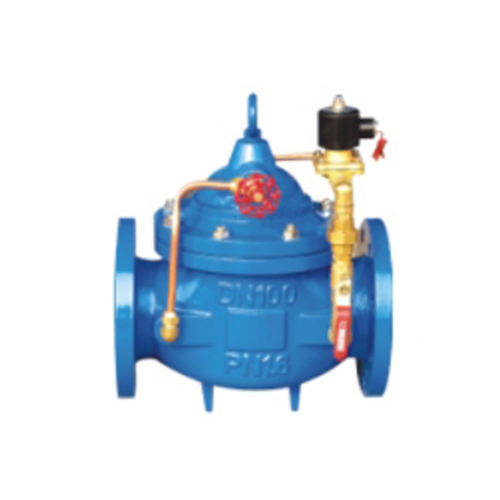
The Best Butterfly Valves for Industrial and Residential Use
Introduction
Butterfly valves are essential components in various piping systems, offering efficient flow control for liquids, gases, and slurries. Their simple design, cost-effectiveness, and ease of operation make them a popular choice for both industrial and residential applications. This guide explores the best butterfly valves available, their types, materials, and key considerations for selection.
Understanding Butterfly Valves
A butterfly valve consists of a disc mounted on a rotating shaft. When the valve is open, the disc is parallel to the flow, allowing unrestricted passage. When closed, the disc rotates perpendicular to the flow, blocking it completely. The valve is operated via a handle, gear, or actuator, depending on the application.
Types of Butterfly Valves
1. Wafer-Style Butterfly Valves
- Lightweight and compact
- Installed between flanges using bolts
- Ideal for low-pressure applications
- Common in water treatment and HVAC systems
2. Lug-Style Butterfly Valves
- Feature threaded inserts (lugs) for bolt connections
- Allow disconnection of one side without affecting the other
- Suitable for high-pressure and industrial applications
3. Flanged Butterfly Valves
- Have flanged ends for direct bolting to pipes
- Provide a secure and leak-proof connection
- Used in heavy-duty industrial systems
4. Triple-Offset Butterfly Valves
- Designed for high-temperature and high-pressure applications
- Metal-seated for superior sealing
- Common in oil, gas, and chemical industries
5. Double-Offset Butterfly Valves
- Reduce wear and friction with an offset disc
- Ideal for frequent operation
- Used in power plants and water distribution
Best Butterfly Valves for Industrial Use
1. High-Performance Butterfly Valves
- Made from durable materials like stainless steel or ductile iron
- Suitable for high-pressure and corrosive environments
- Often used in chemical processing and oil refineries
2. Triple-Offset Metal-Seated Butterfly Valves
- Excellent for extreme temperatures and pressures
- Zero leakage with tight shutoff capabilities
- Preferred in power generation and petrochemical industries
3. Rubber-Lined Butterfly Valves
- Feature an elastomer lining for corrosion resistance
- Ideal for water and wastewater treatment
- Cost-effective for moderate-pressure applications
4. Cryogenic Butterfly Valves
- Designed for ultra-low-temperature applications
- Used in LNG and industrial gas handling
- Constructed with special materials to prevent brittleness
5. Large-Diameter Butterfly Valves
- Handle high flow rates in water distribution and irrigation
- Often actuated for automated control
- Made from robust materials to withstand heavy-duty use
Best Butterfly Valves for Residential Use
1. PVC Butterfly Valves
- Lightweight and corrosion-resistant
- Ideal for residential water systems and pools
- Affordable and easy to install
2. EPDM-Lined Butterfly Valves
- Provide excellent sealing for potable water
- Resistant to UV and ozone degradation
- Used in plumbing and irrigation systems
3. Compact Wafer Butterfly Valves
- Space-saving design for tight installations
- Suitable for HVAC and home water filtration
- Operated manually with a lever handle
4. Thermoplastic Butterfly Valves
- Resistant to chemicals and corrosion
- Used in residential wastewater systems
- Lightweight and durable
5. Low-Pressure Butterfly Valves
- Designed for household water supply lines
- Easy to maintain and replace
- Cost-effective for small-scale applications
Key Considerations When Choosing Butterfly Valves
1. Material Selection
- Stainless Steel: Best for corrosive and high-temperature environments
- Ductile Iron: Strong and durable for industrial use
- PVC/CPVC: Lightweight and chemical-resistant for residential applications
- EPDM/Nitrile Rubber: Excellent for sealing and flexibility
2. Pressure and Temperature Ratings
- Ensure the valve can handle system pressure and temperature
- High-performance valves are needed for extreme conditions
3. End Connection Type
- Wafer, lug, or flanged based on installation requirements
- Proper sealing is crucial to prevent leaks
4. Actuation Method
- Manual (lever or gear-operated) for simple applications
- Pneumatic or electric actuators for automated systems
5. Flow Requirements
- Full-port valves for minimal pressure drop
- Standard-port valves for cost savings where flow restriction is acceptable
6. Certifications and Standards
- Look for valves meeting AWWA, ANSI, API, or ISO standards
- NSF-certified valves for potable water applications
Maintenance and Troubleshooting
Common Issues and Solutions
- Leakage: Check for worn seals or misalignment
- Stiff Operation: Lubricate the stem or inspect for debris
- Corrosion: Replace with corrosion-resistant materials
Maintenance Tips
- Regularly inspect seals and gaskets
- Clean the valve interior to prevent clogging
- Ensure proper lubrication for smooth operation
Conclusion
Butterfly valves are versatile, efficient, and cost-effective solutions for flow control in both industrial and residential settings. Choosing the right type depends on factors like material, pressure rating, and application requirements. By understanding the different options available, users can select the best butterfly valve for their specific needs, ensuring long-term reliability and performance.
Whether for a large-scale industrial plant or a simple home plumbing system, butterfly valves provide an excellent balance of functionality and affordability. Proper selection, installation, and maintenance will maximize their lifespan and efficiency.
Diese Website verwendet Cookies, um sicherzustellen, dass Sie das beste Erlebnis auf unserer Website erhalten.
Kommentar
(0)